tribal paintings
The Baba Ganeh , gujarat
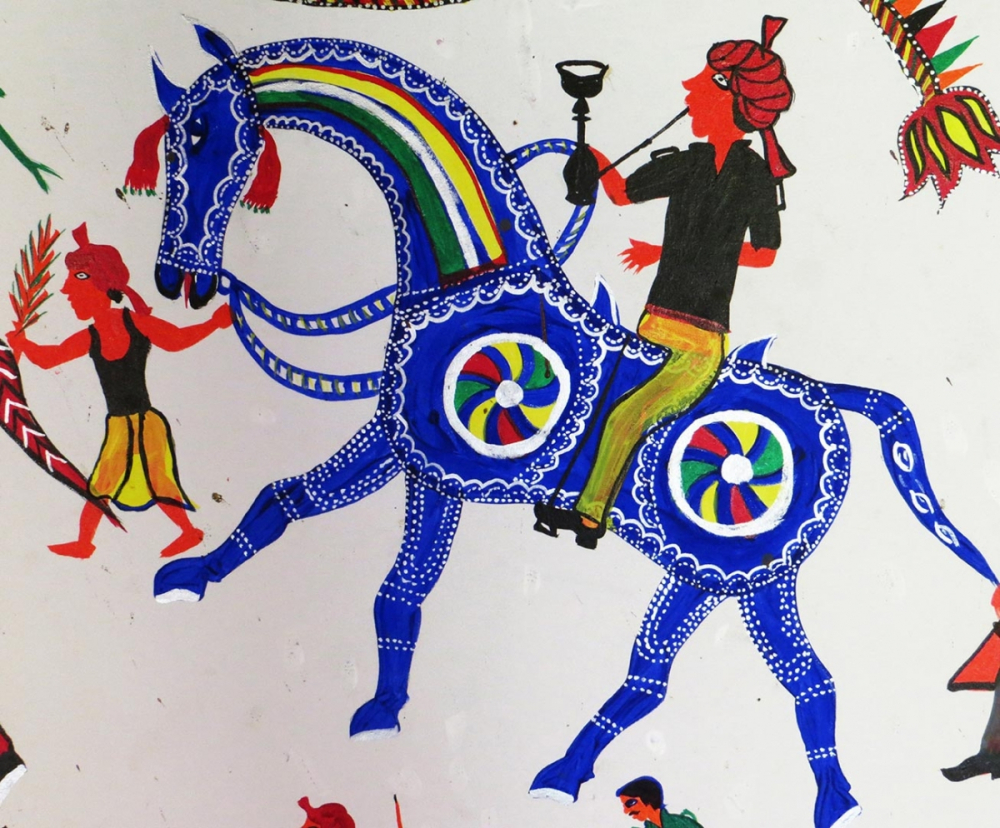
Baba Ganeh design is the recurring theme of the Pithora paintings, the ritual art tradition of Gujarat's Rathwa people. Having strong tribal roots, the paintings act as an offering to the god, thought to bring happiness and peace. Baba Ganeh, being always the first subject in the queue, is incredibly culturally important and is typically done in blue colour, holding the hookah, symbolizing dignity and fatherly affection.
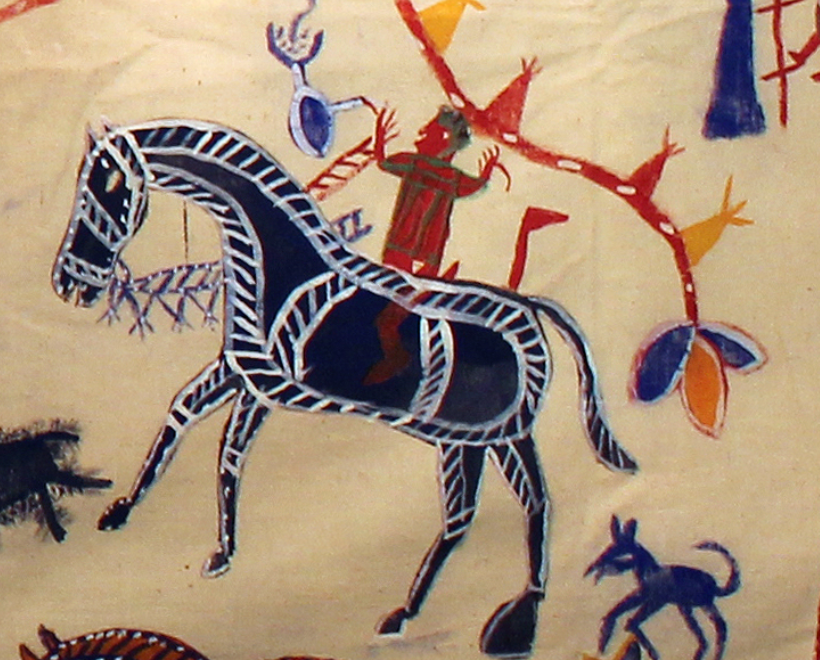
The Baba Ganeh motif represents wisdom, initiation, and regard for customs. In Pithora mythology, Baba Ganeh is also related to eliminating obstructions, similar to Lord Ganesha. His image in the art guarantees divine grace in rituals. The motif brings together aspects such as nature, animals, and village life, depicting the world view of the Rathwa tribe.
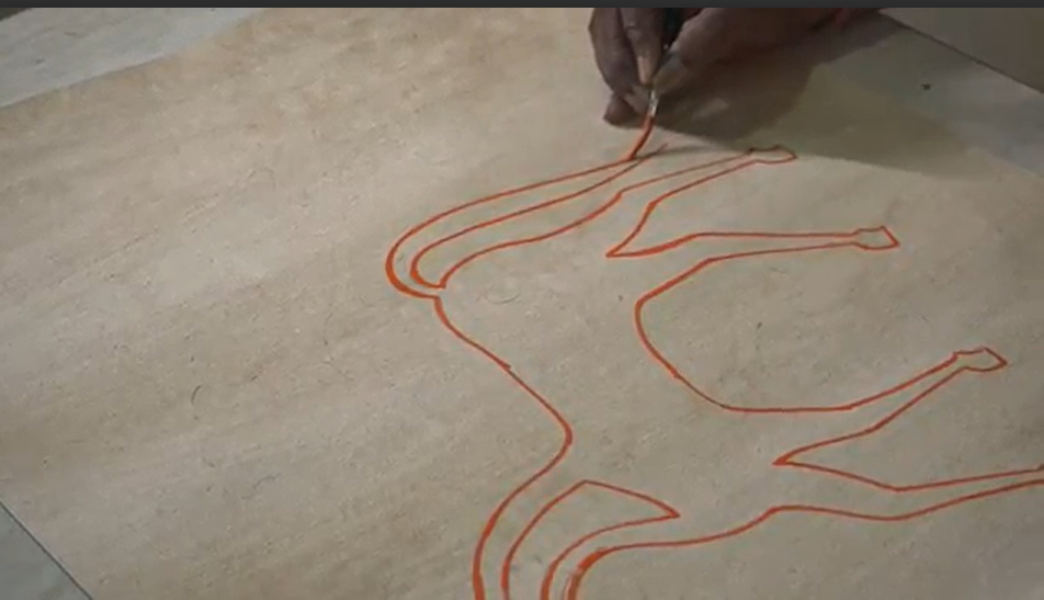
Pithora paintings are created on cow dung and chalk-prepared walls in a technique known as Lipna. The deities are painted with vibrant colors extracted from natural pigments. Male artists known as Lakhara, who are proficient in painting, create the paintings, while unmarried women are responsible for preparing the foundation. Precision is necessary to represent Baba Ganeh in detailed manner to respect his divine nature.
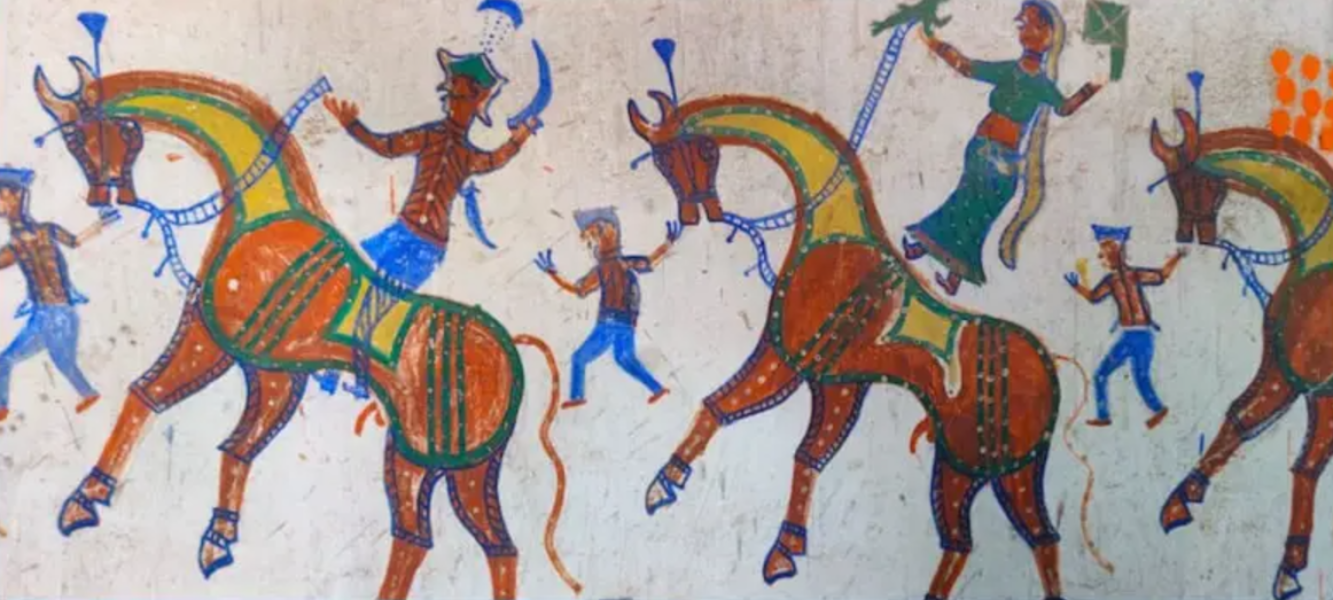
The illustration of Baba Ganeh heralds the beginning of ceremonial rituals. His account, being a part of folk songs, highlights his central role in ensuring the success of divine congregations. In Pithora tradition, ceremonies begin with his invocation to consecrate the process, representing the tribe's spiritual connection with their ancestors and nature.
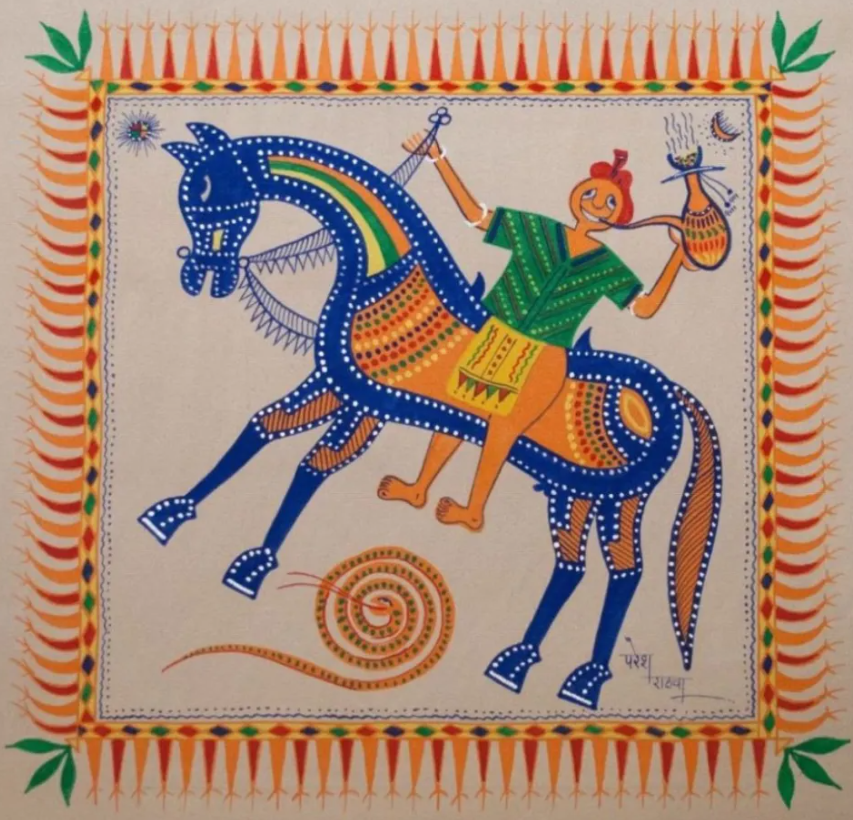
Baba Ganeh is recognized by his unique blue color, elephant-like trunk, and a hookah in hand, with a fatherly demeanor. His positioning on the right side of Pithora paintings signifies respect. The motifs that surround him usually feature colorful depictions of animals, heavenly beings, and everyday life, which reflect the vibrant cultural heritage of the Rathwa tribe.


